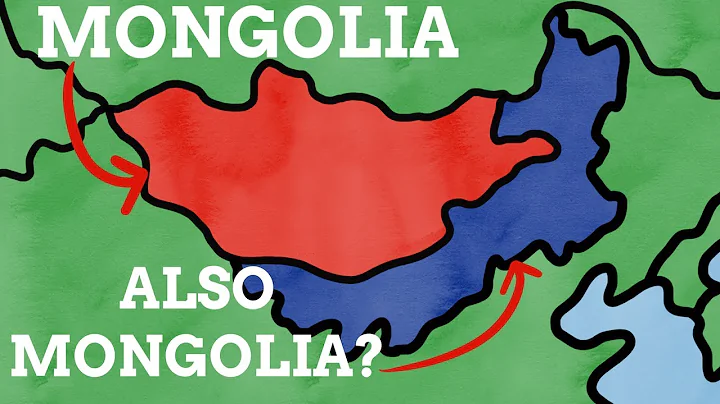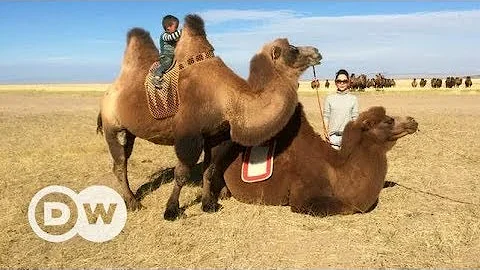
The Qing court had established close relations with the Mongols in the north before and after entering the customs. During the Kang, Yong and Qian dynasties, the relationship between the Qing court and the Mongolian people further developed. During the Kangxi period, in order to unite the Mongolian people in the north, in the 20th year of Kangxi's reign (81), the Mongolian princes of the Qing Dynasty dedicated pastures to the Mongolian princes in Kalaqin, Wengniute, Aohan, Keshiketeng, Bahrain and other tribes. Later, the largest paddock in the Qing Dynasty - Mulan Paddock was officially established. Later, after the summer resort and the Eight Outer Temples were built one after another, every summer and autumn, the Qing emperor would lead the royal family princes, civil and military officials, as well as the princes of Mengji, Monan Mongolia, Inner Zasak 49 Banner, Mobei Khalkha and Moxi Si Oirat, as well as Qinghai Mongolian and other tribes Zhasak , under no less than a hundred banners, went to Mulan paddock to hunt, which was known as "Mulan Autumn Monkey" in history. All Mongolian tribes' Hanbel Taiji had to offer "Nine Whites" and "Three Tributes" to the Emperor of the Qing Dynasty, as well as a family banquet. After the siege, the emperor of the Qing Dynasty would give a banquet to the Mongolian princes, nobles, officers and soldiers who followed the siege, and reward them with gold, silver, silk and satin, bows, arrows, pommel horses and other items. Through hunting, the relationship between the Qing court and the upper-class figures of the Mongolian tribes was further strengthened, and the relationship between the Mongolian people was closer. From the 20th year of Kangxi to the 60th year of Qianlong (81-1795), Emperor Kangxi Xuanye and Emperor Qianlong Hongli made a total of 101 northern inspections, including 89 times for Mulan. Mulan Qiuyi not only trained the Eight Banners army, but also made good friends with various northern Mongolian ministries.

In the 30th year of Kangxi (91), Emperor Kangxi "attached hundreds of thousands of people to Khalkha, and they must be trained in the law and know the etiquette, and specially ordered the guilds to hold a ceremony in Dolonnore, the capital of Shangdu." On April 30, Xuanye personally led the officers and soldiers of the Three Banners and the Green Camp at Gubeikou up the Luanhe River, and the officers and soldiers of the Lower Five Banners came out of Dushikou and gathered in Duolonuoer. Dolennuoer is located northwest of Mulan Paddock and 800 miles south of Beijing. It has always been a must-go place for pilgrims from Inner and Inner Mongolia. Before the alliance , the princes and princes of the three Mongolian tribes of Khalkha and the 49 banners of Inner Mongolia and Taiji gathered a hundred miles away from Dolonnoor. On May 2nd, Xuanye summoned various Mongolian nobles in the tent temporarily set up in front of the camp in Dolonor. First, mediate the conflict between the Khalkha Mongols Sheitu Khan and Zhasak Tuhan so that they can "clear their old grievances." Afterwards, a guard of honor was arranged and a band was set up. They were led by Lifanyuan officials. The Khalkha Mongolian nobles were listed on the right, and the princes of the 49 Banners of Inner Mongolia were listed on the left. They met with Emperor Kangxi and "danced and played music". The Mongolian princes and nobles drank and feasted together. Afterwards, Emperor Kangxi once again summoned 35 nobles including the Khalkha Mongol Shetu Khan to hold an alliance in the form of a "banquet". According to the request of the Khalkha Mongolian nobles, Emperor Kangxi announced that "you and my forty-nine banners will be organized together, and the flags will be the same as the forty-nine banners." He divided the Khalkha Mongolia into 34 banners and abandoned the old ones. Khan title, and one by one with the new Khan and the title of Prince, County King, Beile, Beizi , Gong, Taiji, etc., he set up a counselor and an assistant leader under his banner, establishing the same system as the 49 banners. On May 4th, Emperor Kangxi held a grand military parade ceremony on the Duolun Grassland of the . He personally wore armor and rode on horseback to review the majesty of the multi-ethnic country's army. Duolun League ended the long-term disputes between Inner and Outer Mongolia and strengthened the Qing Dynasty's rule over Inner and Outer Mongolia.

Secondly, in order to further unite and control the upper-class figures of the Mongolian people, the rulers of the Qing Dynasty adopted marriage alliances to turn conflicts into friendship. Since Nurhachi in the Qing Dynasty, it has attached great importance to marriages with various Mongolian tribes, welcoming the daughters of Mongolian princes into the palace, and becoming good friends of the Qin and Jin Dynasties. Huang Taiji 's Empress Xiao Duanwen , Xiaozhuang Empress Wen and Emperor Shunzhi 's Empress Xiao Huizhang were all daughters of the Mongolian prince Horqin. The rulers of the Qing Dynasty often married the daughters and princesses of the clan to the children of Mongolian princes. From Nurhaci to the end of Qianlong, 11 princesses were married to various Mongolian tribes. The mutual marriages formed a "nephew-uncle relationship for generations", which strengthened the kinship between the Qing Dynasty and the Mongolian princes.

In November of the thirty-sixth year of Kangxi (97), Emperor Kangxi married his sixth daughter to Dunduobu Dorji, the king of Doluo County of the Tuxie Tuhan tribe in Khalkha Mongolia, and named her Princess Heshuo Kejing. .His fifth daughter married Garzang, the son of Prince Zashi of the Karaqin tribe in Monan Mongolia, and was named Princess Duanjing of Heshuo. In the forty-fifth year of Emperor Kangxi's reign (1706), he went to Wengniute in person to visit the eighth princess Heshuo Wenke Princess who was married to Cangjin, the king of Wengniutedoluo County. Welcoming him, the sound of joy moves the earth.” When Emperor Qianlong married his daughter Princess Gu Lun and Princess to Horqin Mongolian prince Serbuteng Banjul, who had been raised in the palace since she was 9 years old, he once wrote a poem: "The marriage alliance between Shidu and Qin is planned. When I was brought up, I was really worthy of being called my son-in-law. I laughed and planned to get married." In short, the political ties were strengthened through marriage.

In order to strengthen the ties with the Mongols, Uyghurs and Tibetans, the Qing government spent 87 years from the 42nd year of Kangxi to the 55th year of Qianlong (1703-1790) to build Chengde Summer Resort As the government affairs center of the Qing Dynasty for handling ethnic minority affairs, upper-level leaders of ethnic minorities such as the Mongols from Monan, Mobei, Qinghai, and Xinjiang, the Uyghurs from the north and south of the Tianshan Mountains, and the Tibetans from Sichuan and Tibet all came to Chengde for pilgrimage. . The emperor of the Qing Dynasty summoned and rewarded the top figures of various ethnic minorities here, and negotiated and mediated ethnic disputes.

After several generations of the early Qing Dynasty used troops in border areas for about a century, by the Qianlong period, a vast country had basically formed, and China's pattern as a unified multi-ethnic world power was finally determined. At its peak, the Qing Dynasty extended to Congling and the northern shore of Lake Balkhash in the west, to the Tangnu Ulianghai region in the northwest, to Mobei and Siberia in the north, and to the Pacific Ocean (including Sakhalin Island) in the east. ), Nanda Nansha Islands . The mainland governs 18 provinces including Jiangsu, Anhui, Zhejiang, Jiangxi, Fujian (including Taiwan), Shandong, Shanxi, Henan, Shaanxi, Gansu, Hubei, Hunan, Guangdong, Guangxi, Guizhou, Yunnan, and Sichuan. The border areas include the northeastern region under the jurisdiction of the three generals of Shengjing, Jilin, and Heilongjiang, the Inner Mongolia region of 25 59 banners, the Outer Mongolia region of 4 82 banners, the 29 Mongolian banners of Qinghai, the Tangnu Ulianghai region, and Tibet ,Xinjiang. Within this vast territory, there are Han, Manchu, Mongolian, Hui, Tibetan, Uyghur, Zhuang, Miao, Yi, Buyi , She, Naxi , Dong, Bai, Tujia, Li, Gaoshan, Hani , Jingpo, water, Dongxiang, Wa, Lahu, Lisu, Tu, Kirgiz, Mulao, Qiang, Brown, Yao, Dai, Sala, Gelao, Daur, Kazakh, Xibo, Mao Nan, Achang, Tajik, Uzbek, Nu, Tatar, Ewenk, Baoan, Beijing, Yugu, Benglong, Dulong, Oroqen, Hezhe, North Korea, Jino and more than 50 nationality. The country has consolidated its unity as never before.





















